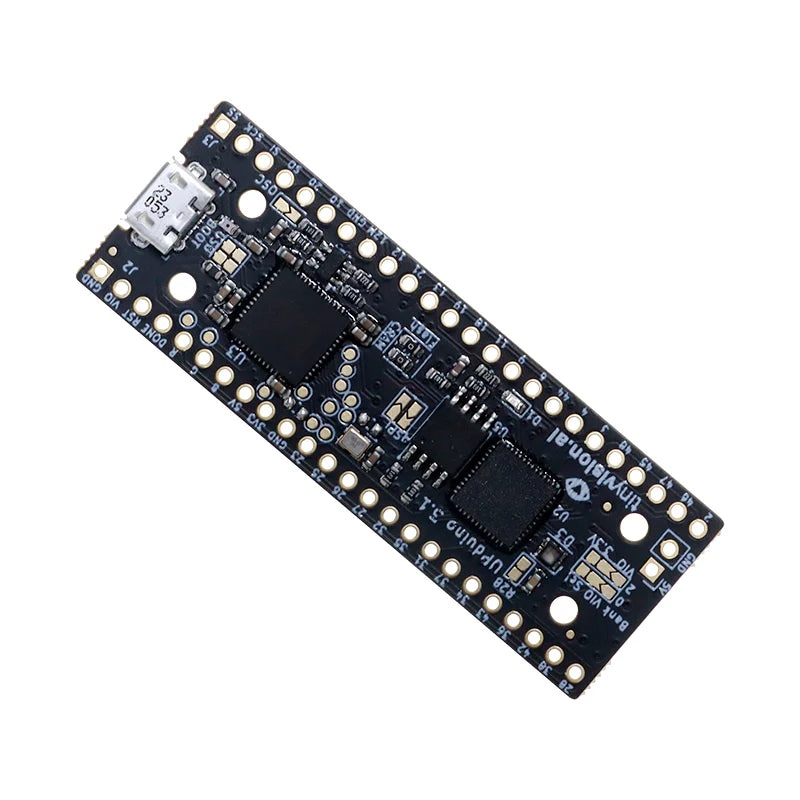What’s an FPGA Development Board?
An Field-Programmable Gate Array or FPGA development board is a hardware platform designed to help developers and engineers design, test, and prototype digital circuits. Unlike traditional processors, FPGAs can be reprogrammed after manufacturing, making them incredibly versatile for various applications. These boards typically include an FPGA chip, memory, I/O ports, and other essential components, allowing you to create custom hardware configurations tailored to your specific needs.
| Pico Ice Lattice FPGA Development Board | UPduino Lattice FPGA Development Board | tinyCLUNX33 MIPI to USB Camera Development Board |
 |
 |
 |
| Buy Now | Buy Now | Buy Now |
What are the Benefits of Using an FPGA Development Board?
- Customizability: FPGAs allow you to create custom hardware solutions, providing a level of flexibility that off-the-shelf processors can't match. You can design circuits that perform specific tasks more efficiently than general-purpose processors.
- Parallel Processing: FPGAs excel at parallel processing, making them ideal for applications that require high-speed data processing, such as signal processing, image processing, and cryptography.
- Rapid Prototyping: FPGA development boards enable rapid prototyping, allowing you to test and iterate on your designs quickly. This speeds up the development process and reduces time to market.
- Scalability: Whether you're working on a small project or a large-scale application, FPGAs offer scalability, allowing you to adjust the complexity and performance of your design as needed.
- Cost-Effective: By using FPGA development boards, you can reduce development costs by eliminating the need for custom ASIC (Application-Specific Integrated Circuit) manufacturing, especially during the prototyping phase.
How to Use an FPGA Development Board?
Using an FPGA development board involves several steps:
- Design Entry: Start by designing your digital circuit using a Hardware Description Language (HDL) like VHDL or Verilog. You can use design tools like Xilinx Vivado or Intel Quartus to create and simulate your design.
- Synthesis: Convert your HDL code into a netlist, a description of the logical elements and their connections, which the FPGA can understand.
- Place and Route: Map your design onto the FPGA's logic blocks and interconnects, optimizing for performance and resource utilization.
- Programming: Upload the final configuration to the FPGA development board, where it will be implemented in hardware.
- Testing and Debugging: Use the board's I/O ports to interact with your design and test its functionality. You can make adjustments and reprogram the FPGA as needed.
What is the best FPGA development board for beginners?
There are several FPGA development boards available, each catering to different needs and budgets. Here are some FPGA development boards from tinyVision:
- Pico Ice: A popular FPGA trainer and educational board with the Raspberry Pi Pico processor (RP2040) and a Lattice Semiconductor iCE40UP5K FPGA. The board features independent flash for the FPGA and RP2040, low power SSRAM, a couple of pushbuttons and a 3 color LED with all FPGA and RP2040 pins brought out to easy to use 0.1" header pins (arranged as Pmod's) for fast prototyping..
- UPDuino v3.1: The UPduino v3.1 is a small, low-cost open source FPGA development board. The board features an on-board FTDI FPGA programmer, flash and 3-color LED with all FPGA pins and all FTDI pins brought out to easy to use 0.1" header pins for fast prototyping.
- tinyCLUNX33 Developer Kit - MIPI to USB Converter: This MIPI to USB converter developer kit is a carrier for the tinyCLUNX33 SoM MIPI to USB camera development board.
What is FPGA Used For?
FPGAs are used across a wide range of industries due to their flexibility and performance advantages:
- Telecommunications: FPGAs are used in base stations, routers, and other network equipment to handle high-speed data processing tasks.
- Aerospace and Defense: In these industries, FPGAs are used for radar systems, signal intelligence, and other critical applications that require reliability and performance.
- Automotive: FPGAs are found in advanced driver-assistance systems (ADAS), providing the computational power needed for real-time image processing and decision-making.
- Consumer Electronics: From high-end audio equipment to gaming consoles, FPGAs enable custom processing tasks that enhance user experiences.
- Medical Devices: In medical imaging, FPGAs are used to process data from sensors in real-time, providing accurate and fast results.
FPGAs offer a unique combination of flexibility, performance, and cost-effectiveness, making them an essential tool for modern hardware development. Whether you're working on a small project or developing complex systems, FPGA development boards provide the tools you need to bring your ideas to life.


